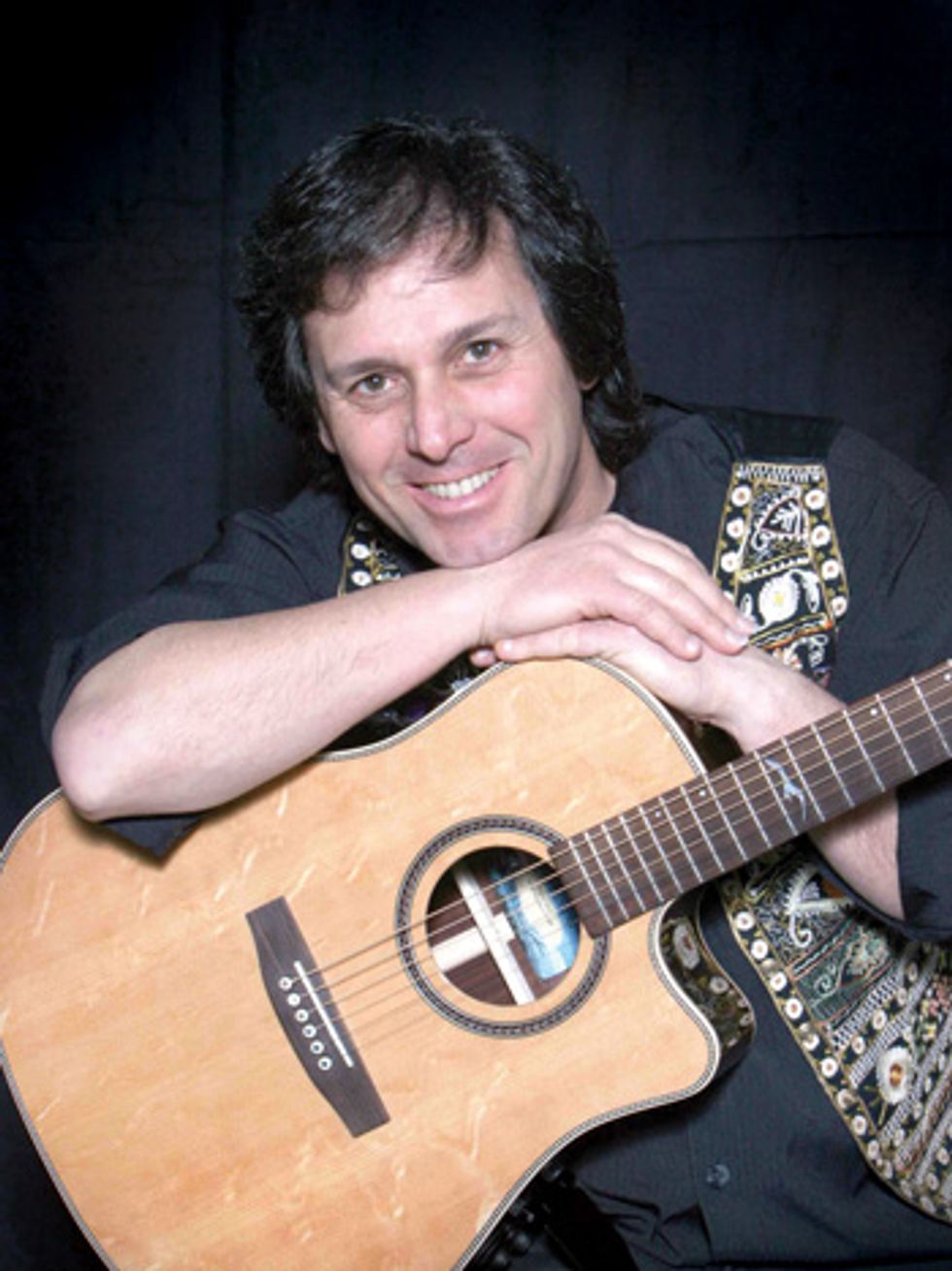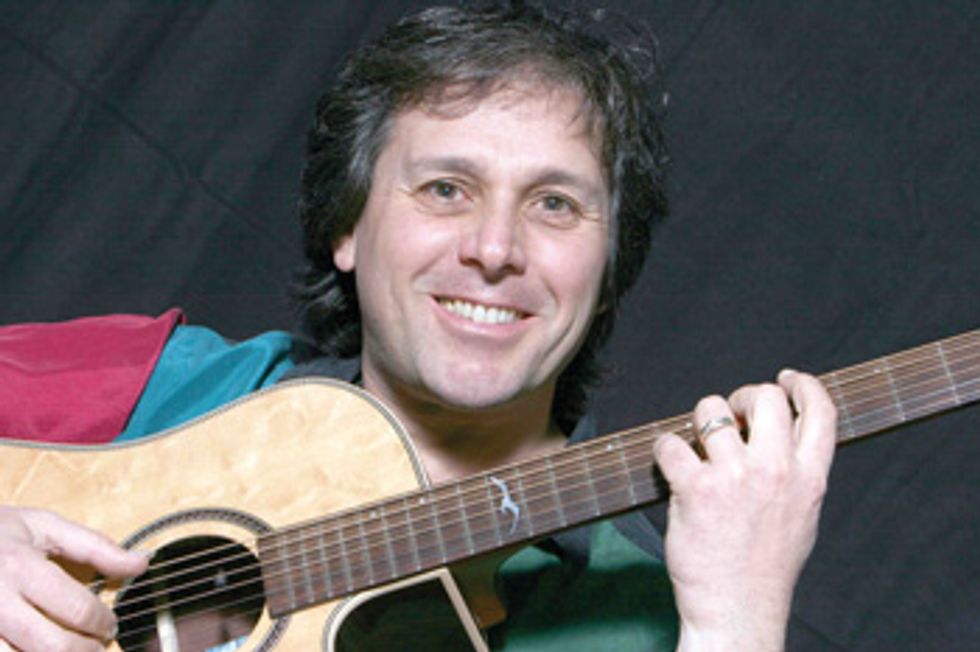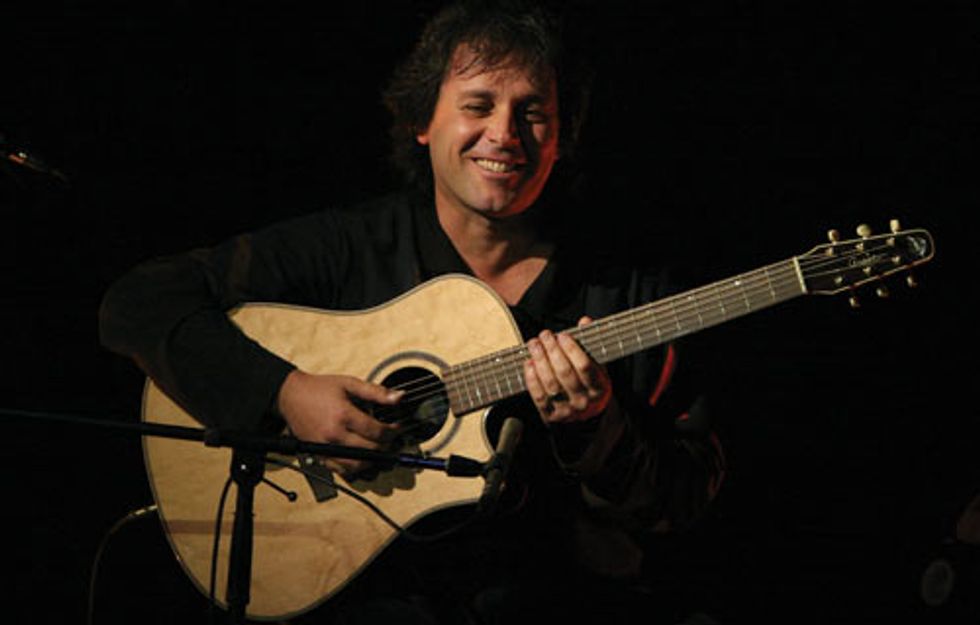|  |
GDP: Buongiorno!
PD: Buongiorno!
Thanks for taking some time to visit with us. You released a new recording last year, Made in Italy, and I read in the press release that you were lamenting that Americans don’t get to hear real Italian music very much. What are the flavors that make up Italian music, so we can start seeking that out and hearing more of the real deal?
Well, Italian music is very melodic. It’s a very rich tradition that starts with the opera, with classical music, and so melody is really emphasized. Some of the melodies are so memorable. For instance, on the CD I chose classical music, but also movie soundtracks and Italian singer-songwriter music. In this country, you’re right—most of the Italian songs that are known are very old Neopolitan songs, like “O Sole Mio,” but there are a lot of singer-songwriters that are comparable to Leonard Cohen or Bob Dylan. They write in Italian, so of course their music is not sold in the US. But they have poetry and beautiful melodies, and I think that they deserve to be exposed. I also recorded classical composers such as Rossini—and also from movie soundtracks by Ennio Morricone, I recorded some of his music on this CD, Made in Italy.
And when you are thinking about arranging traditional music for solo guitar, or movie sound track music or orchestral music, what is your thought process? How do you bring all that music to six strings and ten fingers?
Well, first of all, I try to be respectful of the melodies. Maybe I’ll change the key, because there are certain keys that are easier for the guitar. Sometimes I change the tuning so it makes it easier to translate those melodies to the fretboard. The first thing that I do, I really find where the melodies are on the fretboard, and then I try to come up with the right fingering, and then I add bass line and then chords. I just use those basic elements: melodies, chords and bass. If I can, sometimes I also add some percussion as a fourth element, but only if I can. The guitar is a rhythmical instrument as well as melodic, but adding percussion, to play percussion on the body of the guitar… I just like to make my life complicated, basically. [Laughs]
 I’m sure our readers would be very interested to hear about the Peppino D’Agostino Signature Seagull guitar. Can you talk a little about how that process began and what you went through?
I’m sure our readers would be very interested to hear about the Peppino D’Agostino Signature Seagull guitar. Can you talk a little about how that process began and what you went through? Well first of all, my collaboration with Robert Godin goes back a long way. I’ve been doing clinics for them since 1997. At one point Robert approached me and said, “We would like to build a guitar with your name.” That was very nice; it felt very good. When they build a guitar, they have to think in terms of a very wide market, because he has to sell those guitars to a lot of people, so when I was telling him certain requests, he was also thinking in terms how to make this work for a large audience. And I thought for a while, can this be done in a way that I don’t compromise what I really need from a guitar?
It took two years to make this guitar, two years and I think six or seven prototypes. We went through a lot of changes, and eventually after two years they came up with this guitar. I needed a guitar with electronics in it because I perform live, and so this guitar uses L.R. Baggs pickups as well as Quantum pickups. That is a company based in Canada that makes these pickup systems specifically for Seagull guitars.
The main difference between this guitar and other guitars that is apparent is the width of the neck. It’s pretty wide, because I have Italian sausage fingers and they need to fit, so the neck is pretty wide. It’s between a classical guitar and an acoustic guitar. I’m really happy there’s more space between the strings, so I think that you can be a little more accurate that way. If you look at the headstock, it’s very narrow, and the tuning pegs are aligned so the strings don’t curve when they get to the headstock; they go straight to the machine heads, which basically allows this guitar to stay more in tune when I use open tunings… it allows me to use open tunings without being concerned that the guitar will go out of tune in the middle of a piece.That’s one thing that I really appreciate about this instrument: it really stays in tune.

I see that you have beautiful fingernails. I’m always fascinated by what the process is for nails. As you know, acoustic guitarists are obsessed with their fingernails.
And other stuff, too. [Laughs]
 Would you mind if we take a picture of your nails? Because they are really exceptional.
Would you mind if we take a picture of your nails? Because they are really exceptional. Of course. This is only my third or fourth concert of this tour, so they’re still really new. Maybe in two weeks will be different. I use acrylic nails. Basically, the powder is mixed with some kind of glue, and then this combination becomes hard and they last about a month, sometimes five weeks. As the natural nail grows, the acrylic nail goes up, so I have to file them every two or three days to keep the right length. It’s a process. I just go to nail salons.
Since I started playing nylon string guitar, I like to use my bare thumb versus using the thumb pick because I like the sound of the flesh of the thumb over the nylon string. It’s kind of a sweet sound. When I play steel string, I use the thumb pick.
You use AER amps, which are just about as transparent as you can get. You don’t hear anything except guitar. Have you ever gone the opposite direction and decided to take a delay or a lot of other different sounds and tried to make something completely wacky?
Very much so, yes! I also use a Godin Multiac Synthesizer guitar from time to time. I did a tour three years ago with an electric guitarist, Stef Burns. He plays with Huey Lewis and the News, and we have this quartet: acoustic, electric, bass and drums. With them I use the Synth Multiac Jazz model, for jazz. I like that dimension, it really gives you ideas, just by listening to the sounds. I also work with the World Guitar Ensemble, now called United Guitar Ensemble, in Europe. They play classical music, but also avant-garde classical music, so with them I use the synth as well. We actually recorded Concierto de Aranjuez, just the very fast adagio by [Joaquin] Rodrigo. In this ensemble there’s nine guitars counting me, and I played the synthesizer with a pad of strings, and the other guitarists played the melodies, and it came out really nice. That CD is Crossing Borders by the World Guitar Ensemble, and in that CD I used a Roland GR-33 and the Jazz Multiac synth. That ensemble is no longer in existence.
Hammer-ons, pull-offs, tapping, smacking the guitar around—where else can we go? What is going to happen next?
Well, I think that really the guitar has come so far since I started playing in 1970, when Leo Kottke was the guitar hero of a lot of us because of his technique, and now you know the young players which I like, such as Andy McKee or Antoine Dufour, these people are using a lot of percussion. I think that every year there’s something new, so I’m not surprised if from a technical standpoint there’s something new on the acoustic guitar. I hear people playing all kinds of effects and percussion, and it seems to me that they’re using the guitar more as a drum than a melodic, harmonic instrument, which is okay for me to listen to for about ten minutes, and then after that, it’s a little boring. But there are people able to do both, and that’s when it becomes interesting. Tuck Andress—his playing is very percussive, but you hear everything. That to me is interesting because there’s intelligence behind the chord progression choice that he makes. Also, Martin Taylor is a percussive player, but you hear intelligent, sophisticated chord progressions and melodies. Sometimes I go on YouTube because people say, “You should check this guy out!” I go, and my interest goes away fast if I don’t hear melodies or chord progressions that are interesting.
| GEARBOX Guitars: Seagull Peppino D’Agostino Artist Signature Series Godin SA Grand Concert Godin Multiac Nylon Strings: Dunlop Strings, Phosphor Bronze Light Amps/Preamps: LIVE: Compact 60 AER Amp L.R. Baggs Para DI STUDIO: Pendulum Preamp Effects: Built in effects on AER Amp On Stage: Boss tuner |
Recently, composing. I’m composing again after long hiatus. When I was younger, I thought everything was a cool composition, and now I listen to that stuff and I’m a little bit sad with myself. But now because I know more it’s challenging, and I like the challenge of sitting down and coming up with something that’s interesting and moves me—not only from an emotional standpoint but from a cerebral standpoint. For me, the highest level is a combination of both—something that has an emotional context that’s also interesting from a progression standpoint. Composing is a challenge and it doesn’t come naturally to me. I have to force myself. I know that after six hours of sitting down, I come up with maybe 30 seconds of music that I like, and that’s very rewarding. Maybe other people won’t like it, but when I listen to those 30 seconds and I’m happy, I feel good and I feel like I’ve been productive.
But the performing part I love to do still after so many years, because every night is different.













![Rig Rundown: Russian Circles’ Mike Sullivan [2025]](https://www.premierguitar.com/media-library/youtube.jpg?id=62303631&width=1245&height=700&quality=70&coordinates=0%2C0%2C0%2C0)
















![Rig Rundown: AFI [2025]](https://www.premierguitar.com/media-library/youtube.jpg?id=62064741&width=1245&height=700&quality=70&coordinates=0%2C0%2C0%2C0)




















 Zach loves his Sovtek Mig 60 head, which he plays through a cab he built himself at a pipe-organ shop in Denver. Every glue joint is lined with thin leather for maximum air tightness, and it’s stocked with Celestion G12M Greenback speakers.
Zach loves his Sovtek Mig 60 head, which he plays through a cab he built himself at a pipe-organ shop in Denver. Every glue joint is lined with thin leather for maximum air tightness, and it’s stocked with Celestion G12M Greenback speakers.






